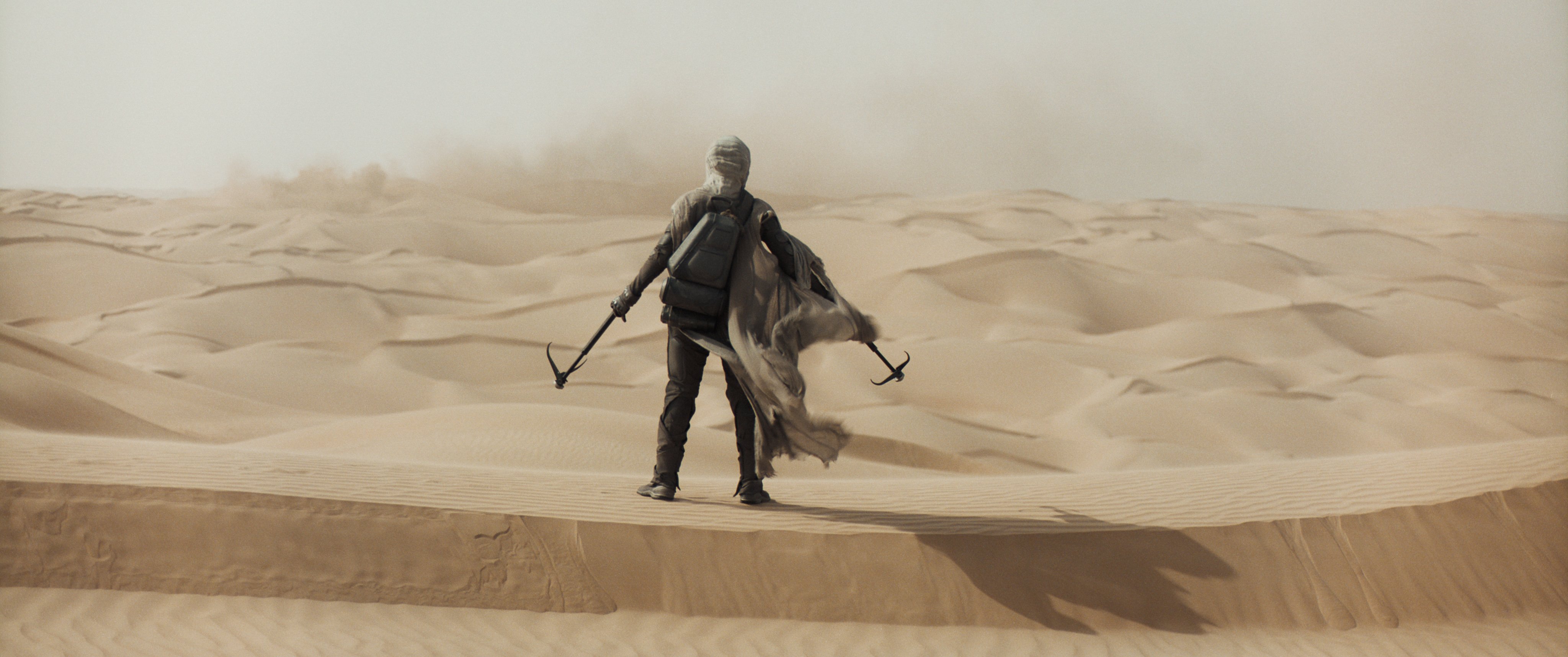
Dune: Part One — Fear Is the Mind Killer
Greig Fraser, ASC, ACS frames this sci-fi epic for director Denis Villeneuve.
Frank Herbert’s Dune is one of the most beloved science-fiction/fantasy novels ever published, and a long-awaited adaptation directed by Denis Villeneuve and photographed by Greig Fraser, ASC, ACS has brought a new, epic take to the big screen — to the biggest screen, in fact.
“Denis said to me early on, ‘I’m dreaming about this movie in 4:3,’” Fraser recalls. “We decided that Imax was the best way for the audience to experience this story, so that’s what we planned for.” To assist in creating the feature’s imagery on this grand scale, production designer Patrice Vermette served as one of Fraser’s key collaborators.
Dune follows Paul Atreides (Timotheé Chalamet), the brilliant son of a galactic leader, born to a great destiny, who will one day inherit an empire. His father, Duke Leto Atreides (Oscar Isaac), has just gained control over the desert planet Arrakis, which is home to an invaluable spice-mining operation. The spice promises to unlock humanity’s greatest potential.
“Dune is one of those movies that you really need to experience in a cinema.”
— Greig Fraser, ASC, ACS
Cinematic Scale
“We worked in both 2.39 and 1.43 for the Imax presentations,” says Fraser, whose photography on the 2016 feature Lion earned him an ASC Award and an Oscar nomination. “When we decided to use the full Imax screen, the 1.43 aspect ratio — as opposed to 2.39 — reflected Paul’s journey and the moments when he is faced with his destiny, but it was also a reflection on nature. We used 1.43 for exteriors on Caladan, in space, and on Arrakis — moments when the epic grandeur of Imax felt right and appropriate to the narrative. I really love true Imax; it’s all-encompassing. When you’re framing for 1.43:1, you’re not limited on the top and bottom of the frame. We were a bit more careful about close-up sizes, of course, because you don’t want to be too close when the face is 70 feet tall!
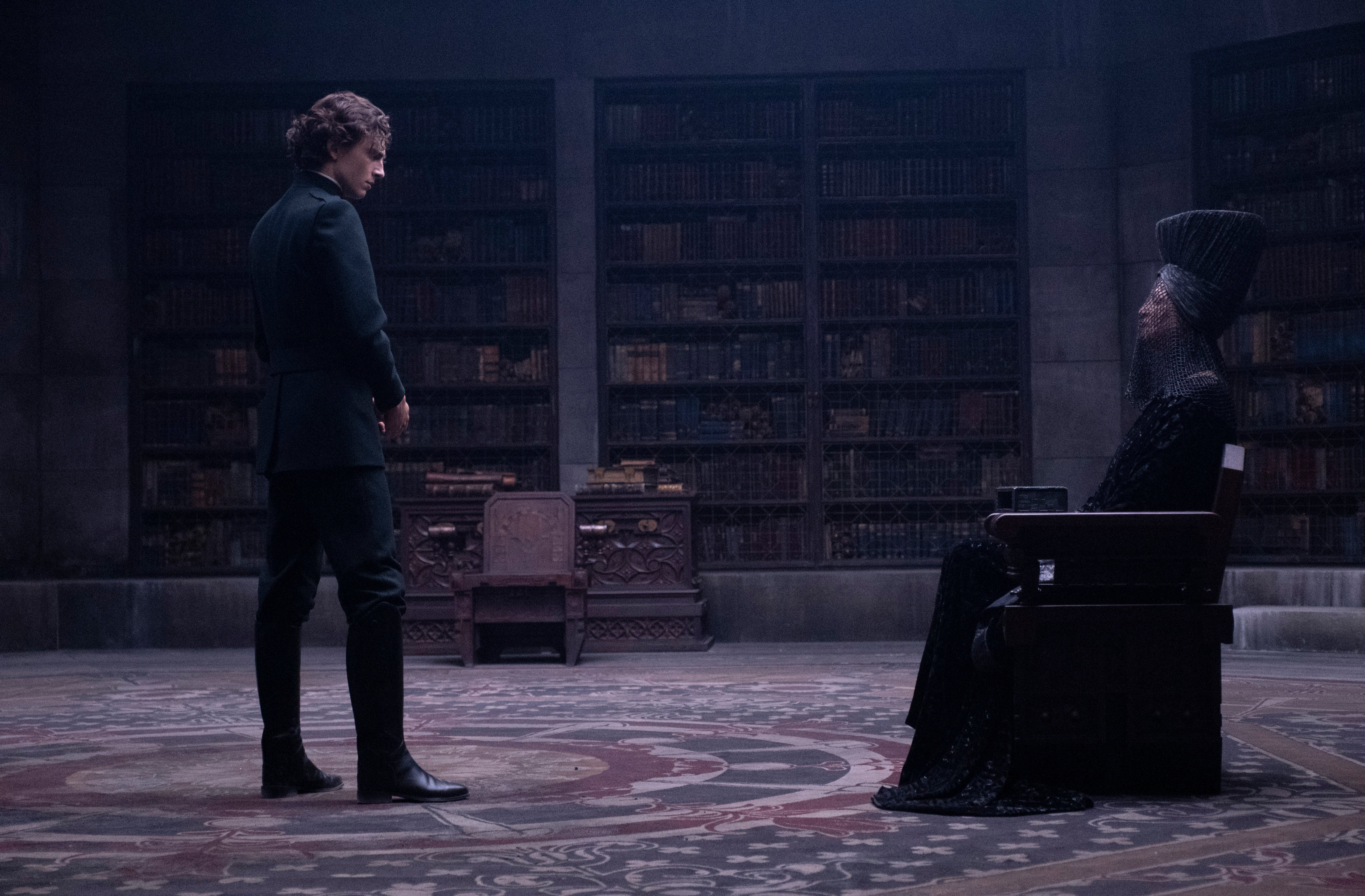
“Dune is one of those movies that you really need to experience in a cinema,” Fraser adds. “I hope that if someone can’t see a real Imax presentation, they can at least see it in the best cinema they can. We knew that many people won’t have access to Imax, so we also designed the whole film for a 2.39:1 widescreen experience.”
Using Arri Alexa LF cameras, Fraser chose spherical Panavision H Series to render 1.43 sequences. For sequences designed to be 2.39:1 in any presentation (including Imax), he chose Panavision Ultra Vista 1.65x anamorphic lenses that he had custom-tuned for The Mandalorian (AC Feb. ’20) with Panavision’s senior vice president of optical engineering and ASC associate Dan Sasaki.
Optimized Schedule
Dune was shot in Hungary and Jordan. The team began with five weeks of principal photography on stages and backlots in Hungary, then moved to Jordan for four weeks of location work, then back to Hungary for 14 weeks; this schedule gave the art department time to turn over sets, many of which were massive. “We shot all the interior sets in Hungary,” Fraser adds. “Jordan has a fantastic filmmaking infrastructure, but no soundstages, so we only shot in practical locations there, including beautiful sand dunes right on the border of Israel.”
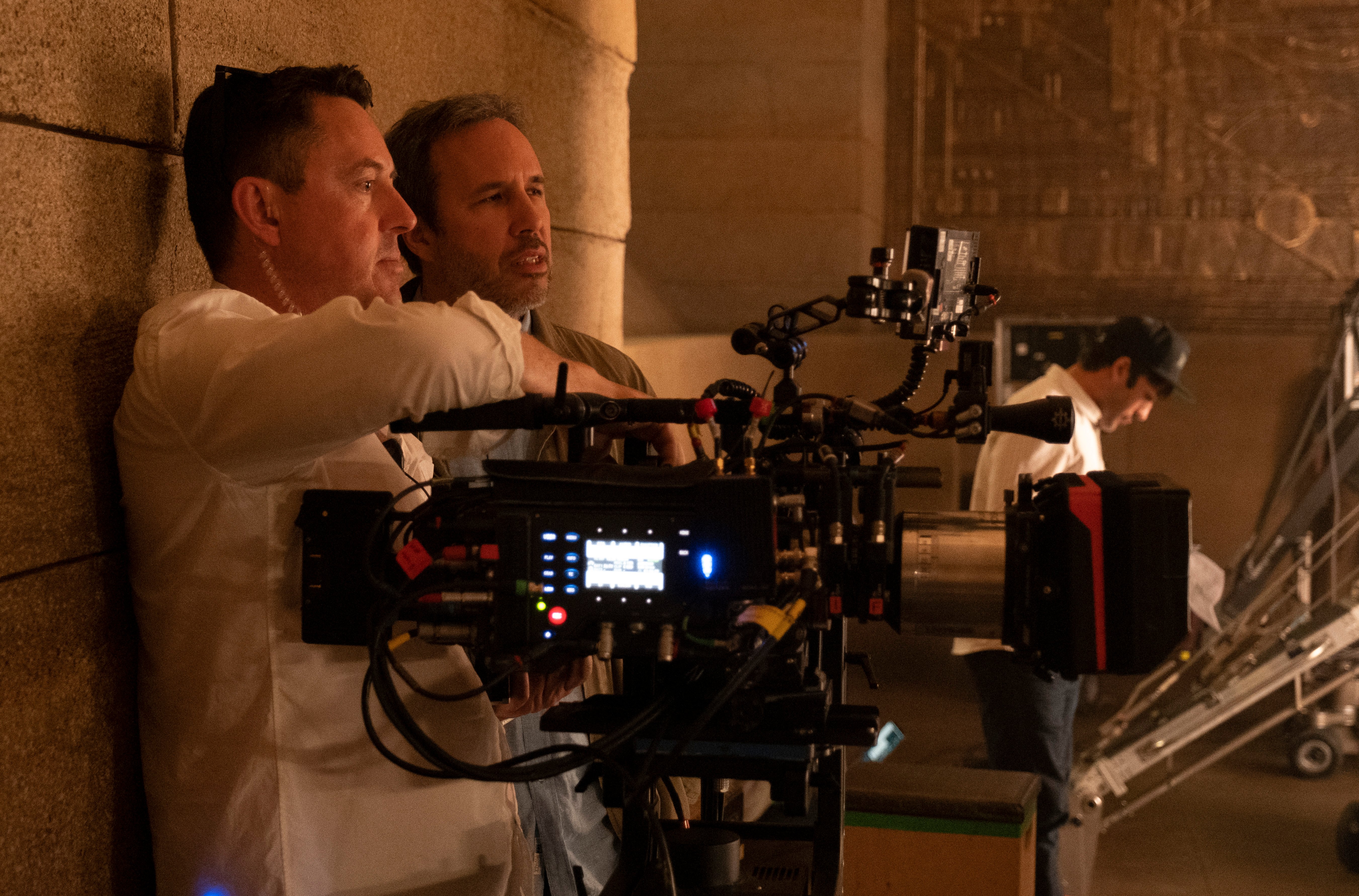
Katelin Arizmendi served as 2nd-unit cinematographer, and additional photography was contributed by Pierre Gill, CSC and Adam Arkapaw, ACS.
Hot, Hazy Skies
Arrakis’ sun is so powerful that humans can’t survive in direct daylight without significant protection. “It’s the hottest desert you can imagine,” Fraser says. To accentuate the feeling of oppressive heat, Villeneuve wanted the skies on Arrakis to be hot and hazy without blue in them. “We had reference images of these hazy skies from Abu Dhabi, and Denis really loved those,” the cinematographer notes. “But the reality is we knew we’d have days of clear skies and would get that blue, so we had to find a way to treat the skies — partially photographically and partially in post — to get the look that Denis wanted.”
Fraser and FotoKem senior colorist and ASC associate Dave Cole set a LUT early in preproduction, which would pull the blue out of the skies and roll off the overexposure. Fraser then chose to eschew polarizing the sky in Jordan, in order to avoid saturating the blue — and then in the final color session, he and Cole worked to desaturate the blue, which yielded the hot and hazy look they were seeking.
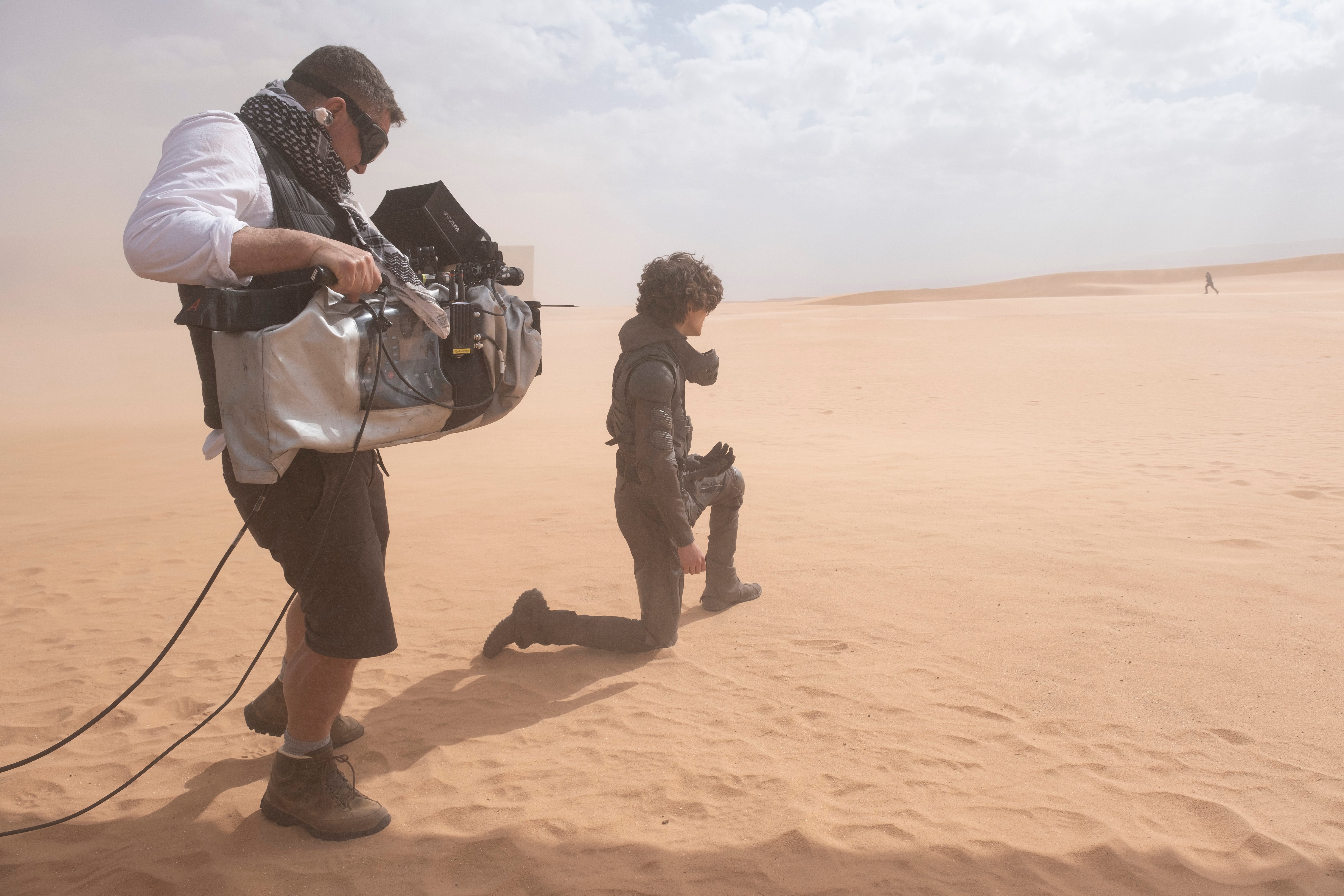
“I am eternally grateful to FotoKem for their work on this film — it was a true partnership,” Fraser says. “Dave didn’t just come in at the end; FotoKem was involved from the very beginning — [as was] Chris Rudkin, who did our dailies and [on-set] timing with the lighting. The look of the skies started with the LUT, then [progressed to] how I exposed and shot on location, and then it was refined further in the color suite. It’s important to recognize that color timing is a huge part of the photography, especially with digital tools today.”
Bringing in the ‘Sun’
Owing to the oppressive sunlight on Arrakis, Fraser notes, “The buildings that the people live in are made of rock and built like fortresses to protect them from the sun and keep them cool. There’s no direct light coming through windows. Sunlight is reflected into ‘light wells’ — channels designed into the hallways that create indirect light. We wanted that to feel bright, sourcey and directional.”
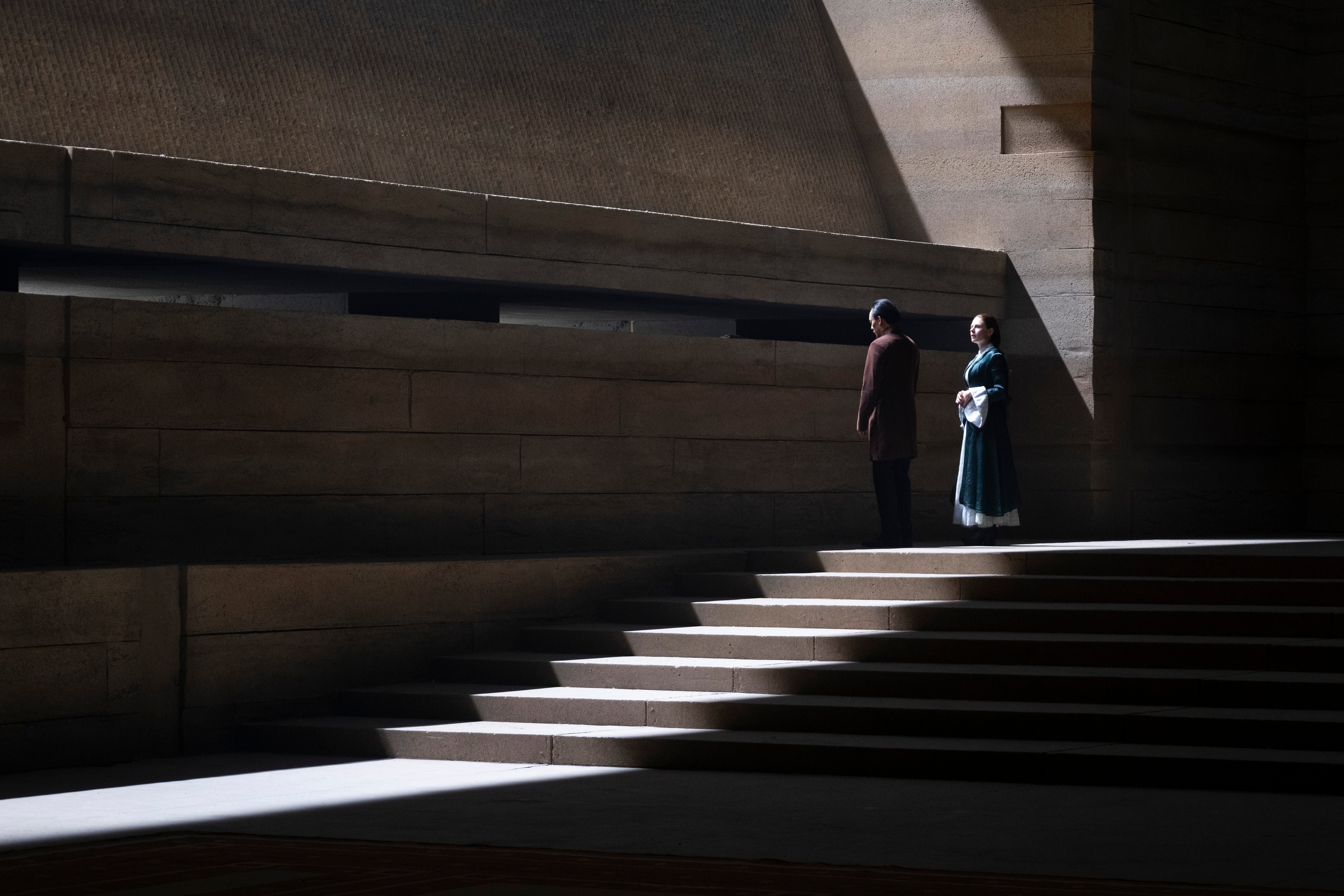
The main residence that’s featured on Arrakis has a wide, 150'-long hallway with rows of light wells along one side. Featured in production designer Vermette’s conceptual art for the film, these light wells provided Fraser with a bit of a challenge: How do you create a bounced light that still has directionality and shape?
For wide interior shots of the expansive location, Fraser and his gaffer, Jamie Mills, simulated the reflected sunlight with Chroma-Q Studio Force II LED strip lights to provide punch and shape, and a pleasing ambient softness — as well as a distinctive strip of light on the opposite wall that mirrored the conceptual art. For closer work on actors, Mills swapped in Digital Sputnik DS fixtures
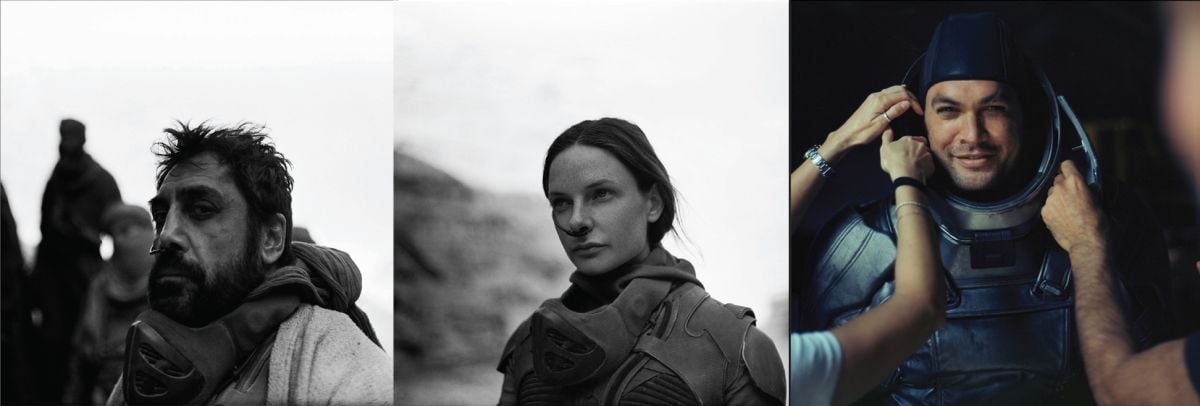
Color and Depth
“For every job I do,” Fraser says, “I do extensive testing of lights, cameras and lenses — even for the tools I work with all the time. I’ve talked a lot about Digital Sputnik DS fixtures in the past, but they truly provide a dimensionality and depth of color that I’ve not found in any other LED source. The source is only RGB, but the camera sensors are only RGB as well. We couldn’t find enough of them for Dune, so we worked with a lot of other fixtures for backgrounds and reserved the DS and Creamsource fixtures for the talent.”
Desert colors dominate throughout the movie, but Fraser, Vermette and costume designer Jacqueline West went to great lengths to imbue that palette with subtle and organic variations of color. “We worked very hard to make sure the world of Dune was not monochromatic,” Fraser says. “For example, Patrice worked veins of reds and blues into the sand walls. He — and Jacqueline, who built these subtle gradations of color into the costumes — both did wonderfully subtle work, and I had to make sure we were capturing those subtleties. The best way to do that is with the best light, and for me, that’s the Sputniks and the Creamsources.
“My approach was to pull as much color as possible out of non-colorful situations,” he continues. “It was all subtle differences, not necessarily bold color contrasts. Achieving bold color in film is super easy. Achieving depth [in the image while creating a natural-light look] when you’re working with a digital sensor and digital lights is harder than it might first appear. Part of it is the sensor, part of it is the lens, and part of it is the fixture. We’ve all learned how to create depth with lenses and lighting — shoot on a larger format, open the T stop, use a bigger iris, place a shadow in the foreground, illuminate the midground and place a shadow in the background — but we can also create depth with color, and if we have the right color in the fixtures, then we have a lot more control over that depth.”
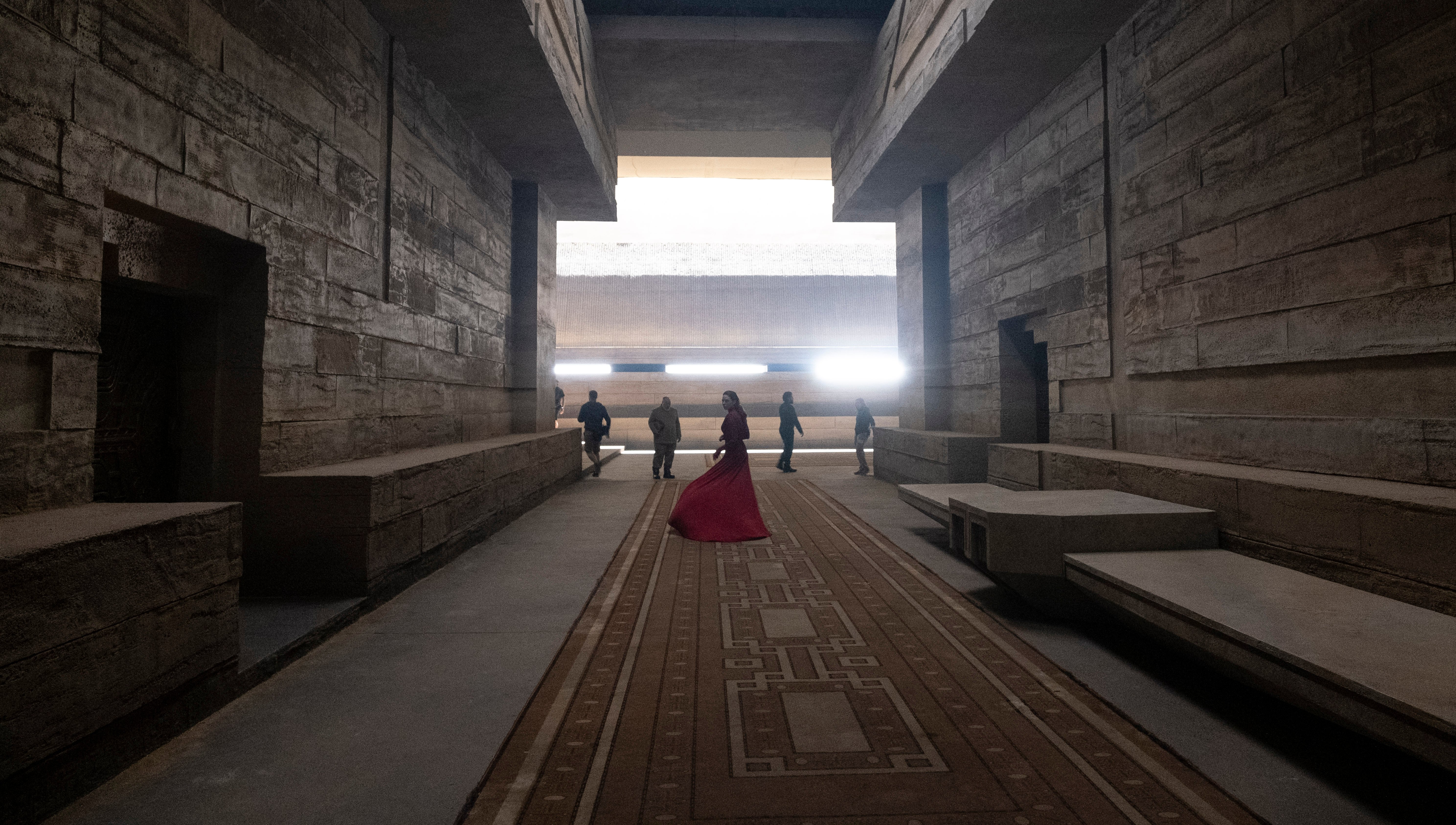
Grading Light
To that end, Fraser continued a practice on Dune that he’d started on The Mandalorian: He brought the dailies colorist — in this case, Rudkin — to the set to grade scenes through the lighting dimmer board, not through the camera and its matrix settings.
“We color-graded our light,” says Fraser. “You start to get ‘four-dimensional’ color by doing that. You have the ability to maximize the key, fill and overall coloration of light that is reaching the sensor. Being able to refine it before it’s recorded really helps us get the right final image.
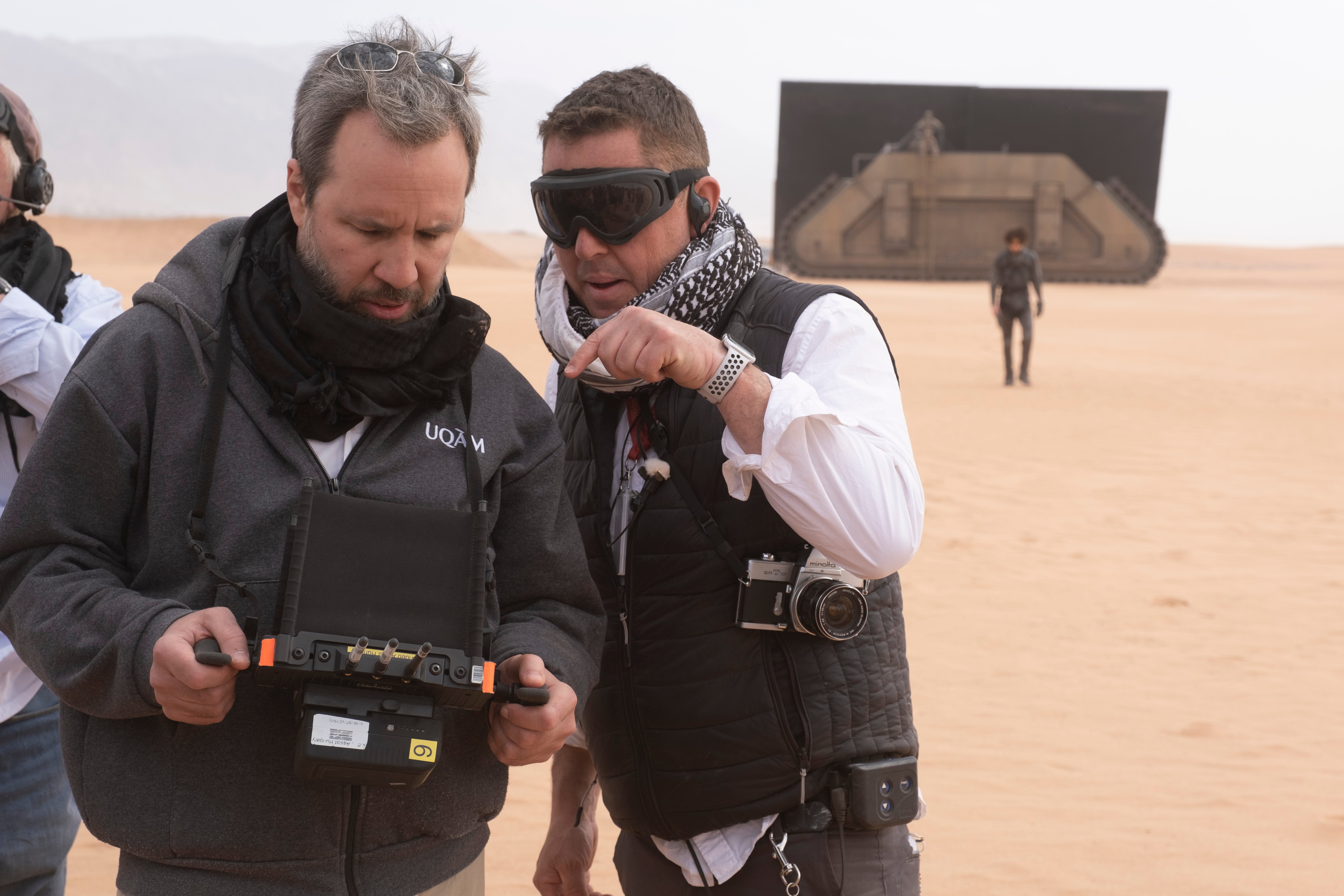
“Chris came in when we prelit, and then also colored our dailies, so he had an intimate connection to our work on set,” the cinematographer continues. “He was also in constant communication with Dave Cole, who did our final grade with me. Chris would work with the lighting board like he was working the wheels in a color session, making the rocks slightly warmer or the skin tones slightly cooler. It takes the trained eye of a colorist to do that.
“Getting the right people involved at the right time is a practice that’s worked really well for me,” he adds. “So much of what we do in the film business is a carryover from the old days. It’s just habit. But when we ask ourselves, ‘Why are we doing it this way? Is there a better way?’— and shift the paradigm a bit — it can elevate the work substantially.”
Intended Experience
“I equate seeing Dune in the cinema with going out to a five-star restaurant and having an extraordinary meal,” Fraser says. “So many things play into the experience: the ambiance, the lighting, the meal fresh from the pan to the plate with fresh ingredients — everything. Of course, you can order that same meal and take it home, but you’re missing the intended experience. It won’t be the same meal when it finally gets to your table.”
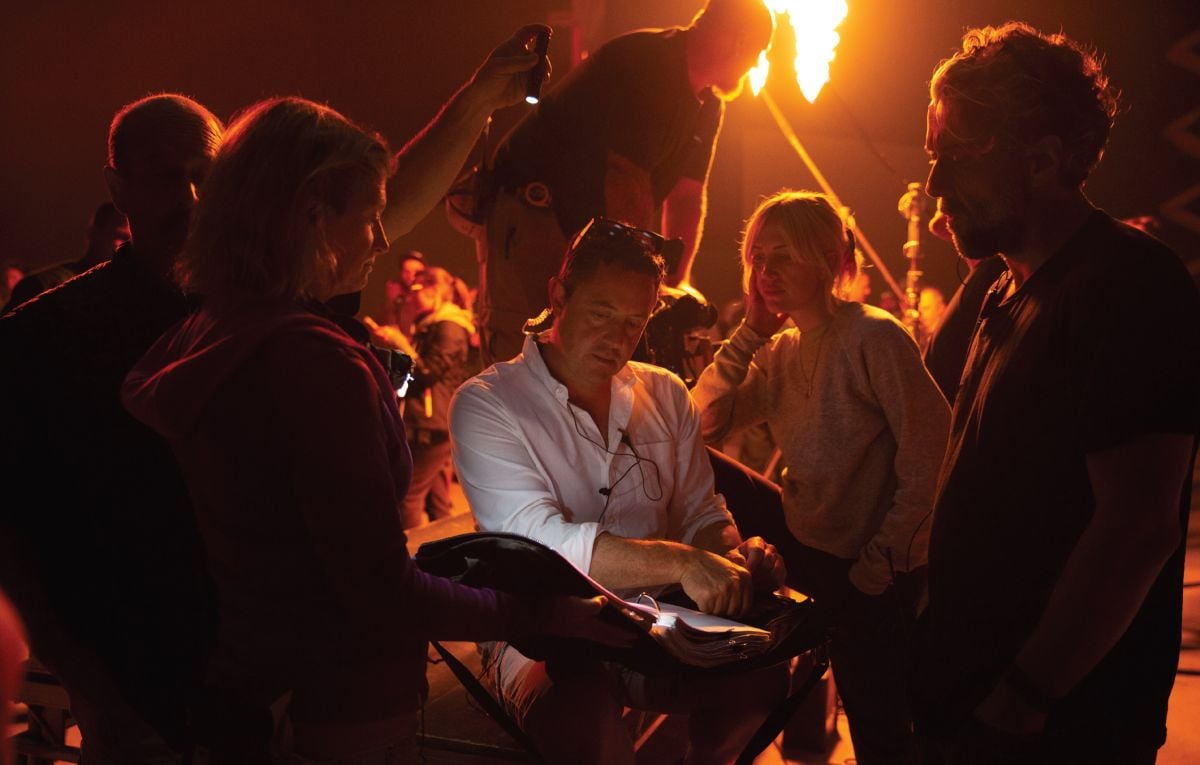
Second-Unit Cinematographer
Fraser had first taken note of up-and-coming director of photography Katelin Arizmendi’s work on social media. “I only knew Greig through social media, but he reached out to me one day and said he and Denis were looking for a DP to do splinter unit and 2nd unit on Dune, along with some pre-lighting and maybe additional camera,” says Arizmendi, whose work includes the feature Swallow (AC May 2020), which recently earned her an ASC Spotlight Award nomination. “I’d never shot 2nd unit, but I flew out to Hungary and met with them, trying to play it cool the whole time. Greig is so great about supporting the next generation. He doesn’t really care about age or experience or where you’re from; if he sees some talent in you, he’s willing to help you out.
“I’d shot four features, various commercials and other projects, but it was a rare opportunity to be given 2nd unit on a big film like Dune,” she continues. “Those six months were the best experience I’ve had in this industry. I was working with people at the top of the A-list and at the top of their game. It was a wonderful team and such a welcoming, family feel on set. Greig and Denis are true, passionate filmmakers with no egos.”
You'll find more detail our Fraser's hybrid photochemical/digital finishing work on the project here.
The cinematographer subsequently spoke to interviewer Mandy Walker, ASC, ACS about his experience in shooting the picture, as part of our ASC Clubhouse Conversations discussion series:
Among others honors, Fraser won the ASC Award, the BAFTA and the Academy Award for his work in the film.






